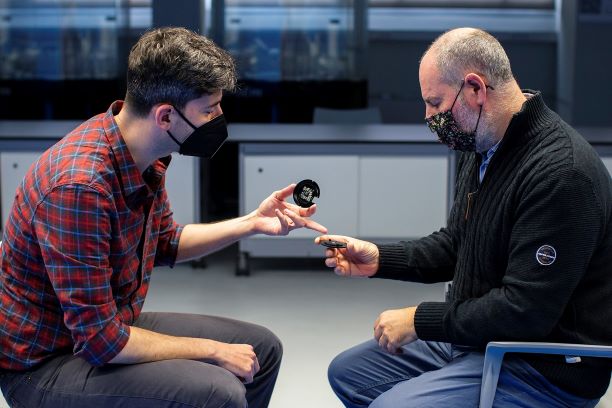
The UB leads the construction of a pocket high-resolution microscope
An international team led by researchers of the University of Barcelona builds the smallest and cheapest high-resolution microscope to date. To build it, researchers developed new nanoLEDs that act as a lightning source and determine the resolution of the microscope without lenses. The team created a new start-up and started a new European project to bring this technology to the market.
As part of the European project ChipScope, researchers have created a new type of super-resolution optical chip-sized microscope. The microscope is based on 200 nm nanoLEDs and could allow the observation of some viruses and cellular processes in real time without the problems of current high-resolution techniques. The current prototype has been developed at a cost of nearly 1,500 euros, but it can reach a few tens of euros when produced at a large scale, since it is completely based on conventional microelectronic technologies.
ChipScope presented a new microscopy, different than the traditional one, in which the resolution depends on the size of the lightening source instead of the detection system. That is, instead of an only source of light –such as in conventional microscopes–, these used millions of light sources in miniature. “The technological challenge was to develop 200 nm nanoLEDs forming an array. The sequential and independent activation enables us to determine the position of the observed object and to follow it real-time”, notes the coordinator of the project, Ángel Diéguez, lecturer at the Department of Electronic and Biomedical Engineering and member of the Institute of Nanosciences and Nanotechnology of the University of Barcelona (IN2UB). This project proved that the new microscopy works and offers a resolution that depends on the size of the used LEDs.
The new microscope has been tested with different samples, among which are cellular images of idiopathic pulmonary fibrosis (IPF), a chronic lung pathology related to age which affects humans and causes half a million deaths per year.
The 4-year long project has been funded with 3.75 million euros within the European call Future and Emerging Technologies (FET Open). Apart from the University of Barcelona, other participants in this project are the Technical University of Braunschweig (Germany), University Rome Tor Vergata (Italy), the company Expert Ymaging (Barcelona), the Austrian Institute of Technology, the Medical University of Vienna, and the Swiss Foundation for Research in Microtechnology.

